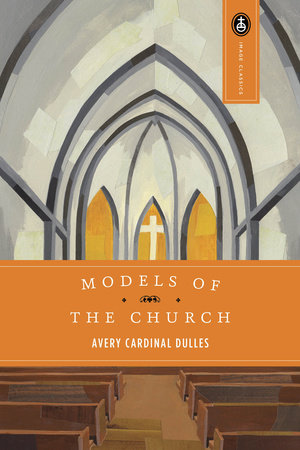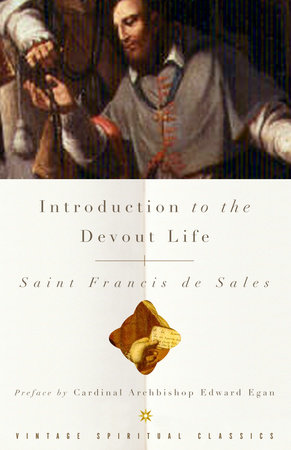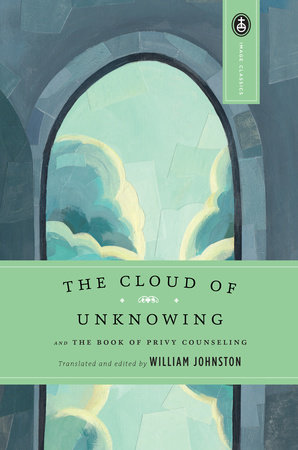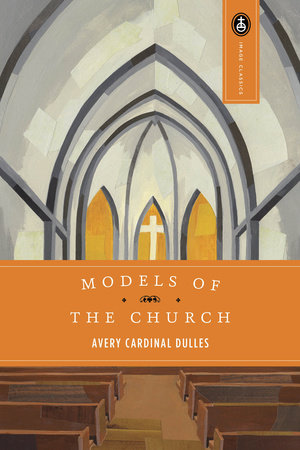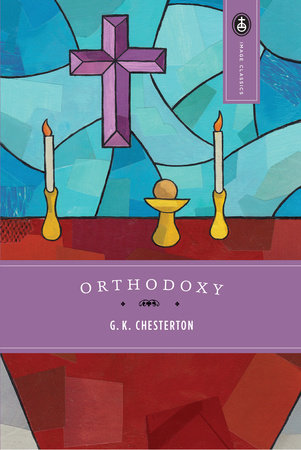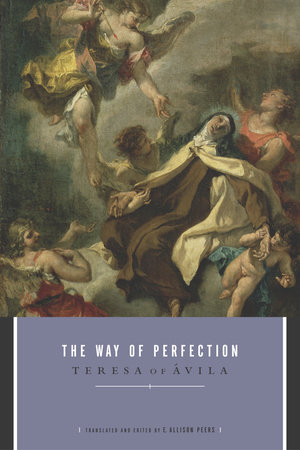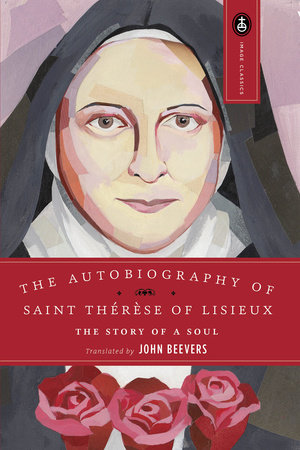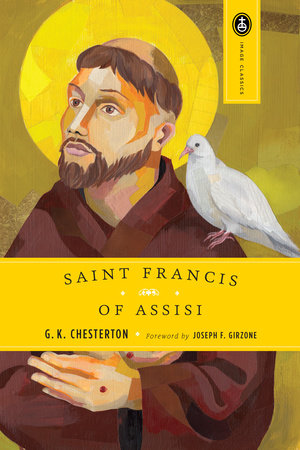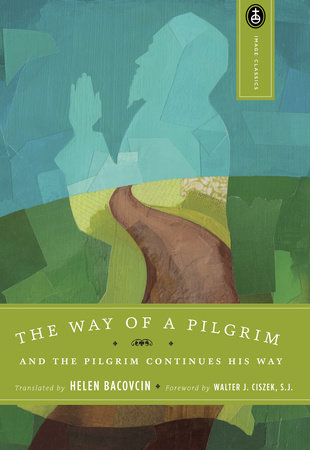Excerpt
Models of the Church
I
The Use of Models in Ecclesiology
In may 1972 the New York Times carried a typical exchange of views about what is happening in the Catholic Church in the United States. It reported the assessment of an Italian theologian, Battista Mondin, to the effect that the Church in America is falling apart. Two days later the Times published a letter to the editor in which the writer conceded, "[Mondin] is right that the traditional Church is near collapse," but then added: "The disasters he mentions are only such to those churchmen who are so stuck in conservatism and authority that they cannot see the Gospel of Christ for the Code of Canon Law . . . My feeling, as a member of an adapting religious community, is that these are the best days of the church."
Disputes of this type are going on everywhere these days. Christians cannot agree about the measure of progress or decline because they have radically different visions of the Church. They are not agreed about what the Church really is.
When we ask what something is we are normally seeking a definition. The classical way to define a thing is to put it into a category of familiar objects and then to list the distinguishing characteristics that differentiate it from other members of the same category. Thus we say that a snail is a slow-moving gastropod mollusk, or that a chair is a piece of furniture designed for people to sit on. In definitions such as these we are dealing with external realities that we can see and touch, and we are able to pin them down fairly well in terms of familiar categories.
It used to be thought, at least by many, that the Church and other realities of faith could be defined by a similar process. Thus the Church, according to Robert Bellarmine, is a specific type of human community (coetus hominum). "The one and true Church," he wrote in a celebrated passage, "is the community of men brought together by the profession of the same Christian faith and conjoined in the communion of the same sacraments, under the government of the legitimate pastors and especially the one vicar of Christ on earth, the Roman pontiff." This definition, as contemporary commentators have noted, comprises three elements: profession of the true faith, communion in the sacraments, and submission to the legitimate pastors. By applying these criteria, Bellarmine is able to exclude all persons who in his opinion do not belong to the true Church. The first criterion rules out pagans, Moslems, Jews, heretics, and apostates; the second rules out catechumens and excommunicated persons; the third rules out schismatics. Thus only Roman Catholics remain.
It is significant that Bellarmine's definition is entirely in terms of visible elements. He even goes so far as to maintain that, whereas profession of the true faith is essential, actual belief, being an internal and unverifiable factor, is not. A man who professes to believe but does not believe in his heart would be on this definition a member of the Church, whereas a man who believed without professing to believe would not be. Bellarmine's concern against the Reformers (especially Calvin) is to show that the true Church is a fully visible society--as visible, he says, as the Kingdom of France or the Republic of Venice. No doubt this concern reflects something of the spirit of the seventeenth century. The baroque mentality wanted the supernatural to be as manifest as possible, and the theology of the period tried to reduce everything to clear and distinct ideas.
This clarity, however, was bought at a price. It tended to lower the Church to the same plane as other human communities (since it was put in the same general category as they) and to neglect the most important thing about the Church: the presence in it of the God who calls the members to himself, sustains them by his grace, and works through them as they carry out the mission of the Church. There is something of a consensus today that the innermost reality of the Church--the most important constituent of its being--is the divine self-gift. The Church is a union or communion of men with one another through the grace of Christ. Although this communion manifests itself in sacramental and juridical structures, at the heart of the Church one finds mystery.
The term "mystery" has been used in many ways in the biblical and nonbiblical religions. For present purposes, the usage of the Pauline epistles (1 Cor., Eph., and Col.) would be of central importance. The mystery par excellence is not so much God in his essential nature, or the counsels of the divine mind, but rather God's plan of salvation as it comes to concrete realization in the person of Christ Jesus. In Christ are "unsearchable riches" (Eph. 3:8); in him dwells the whole fullness of God (Col. 3:9); and this fullness is disclosed to those whose hearts are open to the Spirit which is from God (1 Cor. 2:12).
Vatican Council II, after rejecting an initial schema on the Church in which the first chapter was entitled "The Nature of the Church Militant," adopted as the title of its first chapter, "The Mystery of the Church," and this change of titles is symptomatic of the whole ecclesiology of the Council.
The term mystery, applied to the Church, signifies many things. It implies that the Church is not fully intelligible to the finite mind of man, and that the reason for this lack of intelligibility is not the poverty but the richness of the Church itself. Like other supernatural mysteries, the Church is known by a kind of connaturality (as Thomas Aquinas and the classical theologians called it). We cannot fully objectify the Church because we are involved in it; we know it through a kind of intersubjectivity. Furthermore, the Church pertains to the mystery of Christ; Christ is carrying out in the Church his plan of redemption. He is dynamically at work in the Church through his Spirit.
When the New Testament tells us that marriage is "a great mystery in reference to Christ in the Church" (Eph. 5:32), it is implied that the union of the human with the divine, begun in Christ, goes on in the Church; otherwise marriage would not be a figure of the Church. In a word, the mystery is "Christ in you, your hope of glory" (Col. 1:2).
This general conception of mystery as applied to the Church was set forth by Paul VI in his opening address at the second session of the Council. He declared: "The Church is a mystery. It is a reality imbued with the hidden presence of God. It lies, therefore, within the very nature of the Church to be always open to new and ever greater exploration."
The mysterious character of the Church has important implications for methodology. It rules out the possibility of proceeding from clear and univocal concepts, or from definitions in the usual sense of the word. The concepts abstracted from the realities we observe in the objective world about us are not applicable, at least directly, to the mystery of man's communion with God. Some would therefore conclude that ecclesiology must be apophatic; that we can have only a theologia negativa of the Church, affirming not what it is but only what it is not. In a certain sense this may be conceded. In some respects we shall in the end have to accept a reverent silence about the Church, or for that matter about any theological reality. But we should not fall into the negative phase prematurely, until we have exhausted the possibilities of the positive.
Among the positive tools that have been used to illuminate the mysteries of faith we must consider, in the first place, images. This consideration will lead us into some discussion of cognate realities, such as symbols, models, and paradigms--tools that have a long theological history, and are returning to their former prominence in the theology of our day.
Referring to the debate on the schema De Ecclesia at the first session of Vatican II, Gustave Weigel, a council peritus, observed, in the last article published before his death:
The most significant result of the debate was the profound realization that the Church has been described, in its two thousand years, not so much by verbal definitions as in the light of images. Most of the images are, of course, strictly biblical. The theological value of the images has been stoutly affirmed by the Council. The notion that you must begin with an Aristotelian definition was simply bypassed. In its place, a biblical analysis of the significance of the images was proposed.
As Paul VI noted in the address already quoted, the Church has continually sought to further its self-understanding by meditation on the "revealing images" of Scripture: "the building raised up by Christ, the house of God, the temple and tabernacle of God, his people, his flock, his vine, his field, his city, the pillar of truth, and finally, the Bride of Christ, his Mystical Body." These are approximately the same images used in the Vatican II Constitution on the Church, Lumen gentium, in its first chapter.
The Bible, when it seeks to illuminate the nature of the Church, speaks almost entirely through images, most of them, including many of those just mentioned, evidently metaphorical. Paul Minear, in this book, Images of the Church in the New Testament, lists some ninety-six such images. Even if we rule out a few of these as not being really figures of the Church, we shall agree that the New Testament is extremely luxuriant in its ecclesiological imagery.
Ecclesiology down through the centuries has continued to meditate upon the biblical images. Following in the footsteps of Church Fathers such as Origen, the Venerable Bede (eighth century) finds the Church in Eve and Mary, in Abraham and Sarah, in Tamar, Rahab, Mary Magdalene, in the woman with the flux of blood, in the valiant woman of Proverbs, in Zacchaeus, the Canaanite woman, the ark of Noah, the Temple, the vine, Paradise, the moon, etc. Thus there is nothing new in the fact that images play a prominent role in contemporary ecclesiology.
In these images it is difficult to draw the line between proper and metaphorical usage. For the most part, we are dealing with metaphors, but we must reckon with the fact that human language itself becomes bent by theological usage so that figures that were originally metaphorical can be properly though still analogously predicated. For example, terms such as "People of God" and "Body of Christ" are often considered, in their ecclesiastical application, something more than mere metaphors.
The psychology of images is exceedingly subtle and complex. In the religious sphere, images function as symbols. That is to say, they speak to man existentially and find an echo in the inarticulate depths of his psyche. Such images communicate through their evocative power. They convey a latent meaning that is apprehended in a nonconceptual, even a subliminal, way. Symbols transform the horizons of man's life, integrate his perception of reality, alter his scale of values, reorient his loyalties, attachments, and aspirations in a manner far exceeding the powers of abstract conceptual thought. Religious images, as used in the Bible and Christian preaching, focus our experience in a new way. They have an aesthetic appeal, and are apprehended not simply by the mind but by the imagination, the heart, or, more properly, the whole man.
Any large and continuing society that depends on the loyalty and commitment of its members requires symbolism to hold it together. In secular life, we are familiar with the bald eagle, the black panther, the fleur-de-lis. These images respectively arouse courage, militancy, and purity. The biblical images of the Church as the flock of Christ, the Bride, the Temple, or whatever, operate in a similar manner. They suggest attitudes and courses of action; they intensify confidence and devotion. To some extent they are self-fulfilling; they make the Church become what they suggest the Church is.
Religious imagery is both functional and cognitive. In order to win acceptance, the images must resonate with the experience of the faithful. If they do so resonate, this is proof that there is some isomorphism between what the image depicts and the spiritual reality with which the faithful are in existential contact. Religious experience, then, provides a vital key for the evaluation and interpretation of symbols.
With regard to the Church Paul Minear has rightly said:
Its self-understanding, its inner cohesion, its esprit de corps, derive from a dominant image of itself, even though that image remains inarticulately imbedded in subconscious strata. If an unauthentic image dominates its consciousness, there will first be subtle signs of malaise, followed by more overt tokens of communal deterioration. If an authentic image is recognized at the verbal level but denied in practice, there will also follow sure disintegration of the ligaments of corporate life.
To be fully effective, images must be deeply rooted in the corporate experience of the faithful. In times of rapid cultural change, such as our own, a crisis of images is to be expected. Many traditional images lose their former hold on people, while the new images have not yet had time to gain their full power. The contemporary crisis of faith is, I believe, in very large part a crisis of images. City dwellers in a twentieth-century democracy feel ill at ease with many of the biblical images, since these are drawn from the life of a pastoral and patriarchal people of the ancient Near East. Many of us know very little from direct experience about lambs, wolves, sheep, vines, and grapes, or even about kings and patriarchs as they were in biblical times. There is need therefore to supplement these images with others that speak more directly to our contemporaries. The manufacturing of supplementary images goes on wherever the faith is vital. Today we experience some difficulty, however, since our experience of the world has become, in so many respects, secular and utilitarian. Our day-to-day life provides very few objects having numinous overtones that would make them obvious sources of new religious imagery--though there are some brilliant suggestions for new imagery in the writings of theologians such as Paul Tillich, Teilhard de Chardin, and Dietrich Bonhoeffer.
For an image to catch on in a religious community conditions have to be ripe psychologically. As Tillich used to say, images are not created or destroyed by deliberate human effort. They are born or they die. They acquire or lose power by a mysterious process that seems beyond man's control and even beyond his comprehension.
Images are immensely important for the life of the Church--for its preaching, its liturgy, and its general esprit de corps. We live by myth and symbol--by connotations as much as by denotations. In religious education a constant effort must be made to find images that faithfully communicate the Christian experience of God. Theology itself depends heavily on images. For theology, however, the unanalyzed image is of very limited value. The theologian is not primarily concerned, as the preacher is, with the question whether a given image is readily available and meaningful to the ordinary Christian in the pews. By using historical scholarship and empathetic imagination, the theologian can work with images that have lost their power and relevance for the majority of men today.


